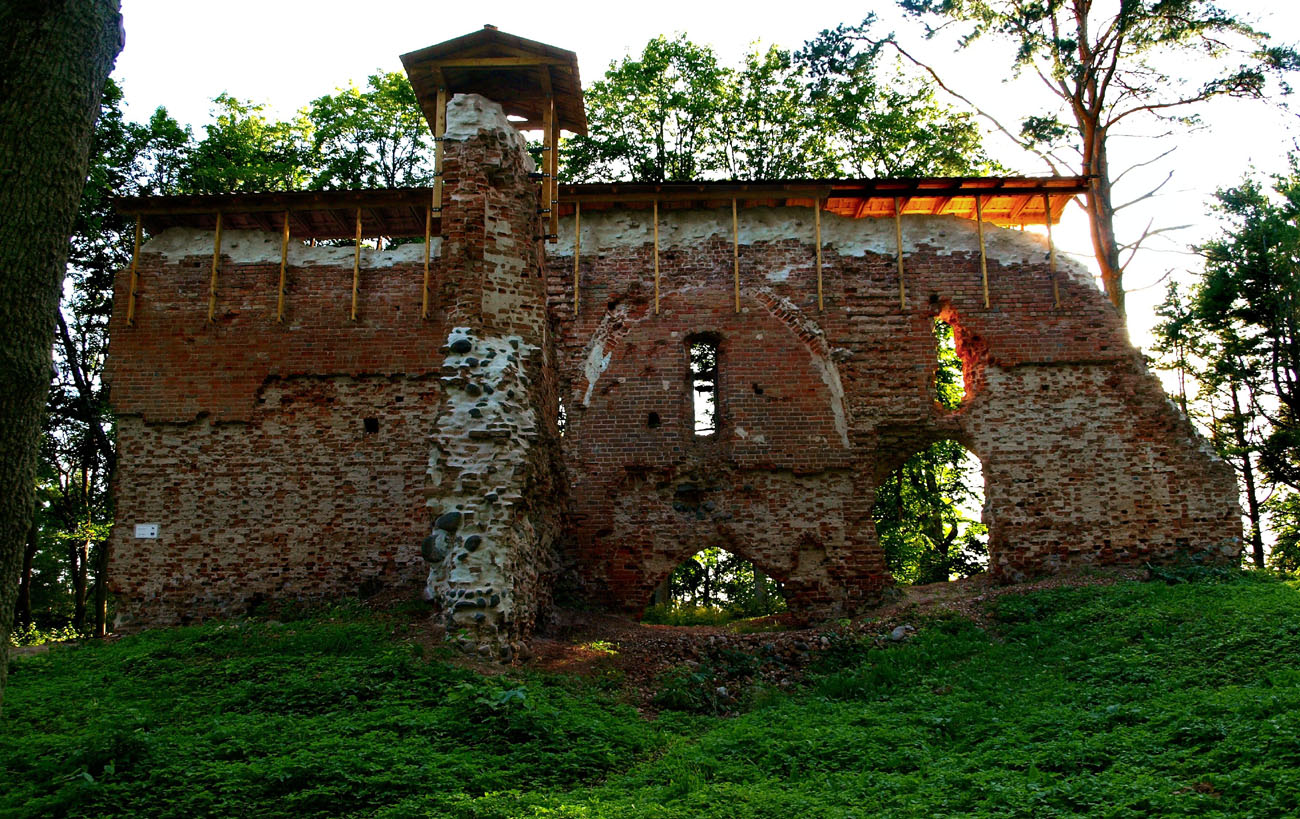History
Knight’s castle Ringen was built after 1340. It was an important point in the defense system of the western border of the episcopal principality. It was owned by the Tödwen family and was extended many times. In the 16th century after the occupation of Dorpat (Fellin) by the Moscow troops of Ivan the Terrible, the castle changed owners several times, it suffered severe damages, as a result of which it lost the military significance. After the Livonian War together with the surrounding areas it was joined to the Polish–Lithuanian Commonwealth, and the new authorities gave it to the Jesuits. The monks were expelled from Rõngu in 1625 by the Swedes, under whose rule the stronghold eventually turned into ruin.
Architecture
The castle was built of brick, like other strongholds of the Dorpat bishopric. The exact layout is not known today, but probably the main courtyard had a regular, rectangular shape. At least one wing of the castle, the same in which the gate was, had buildings. The entrance itself was located in the gatehouse. From 1413, the sources refer to the chapel of the Holy Cross, probably situated above the gate passage. On the eastern side, the poorly developed economic outer bailey was adjacent to the castle.
Current state
To this day, have survived only a fragment of defensive walls, surrounded by forest, and almost the whole, single wall with visible gothic windows and the arch of the main entrance gate to the castle. Admission to the ruins of the fortress is free.
bibliography:
Borowski T., Miasta, zamki i klasztory. Inflanty, Warszawa 2010.
Tuulse A., Die Burgen in Estland und Lettland, Dorpat 1942.

